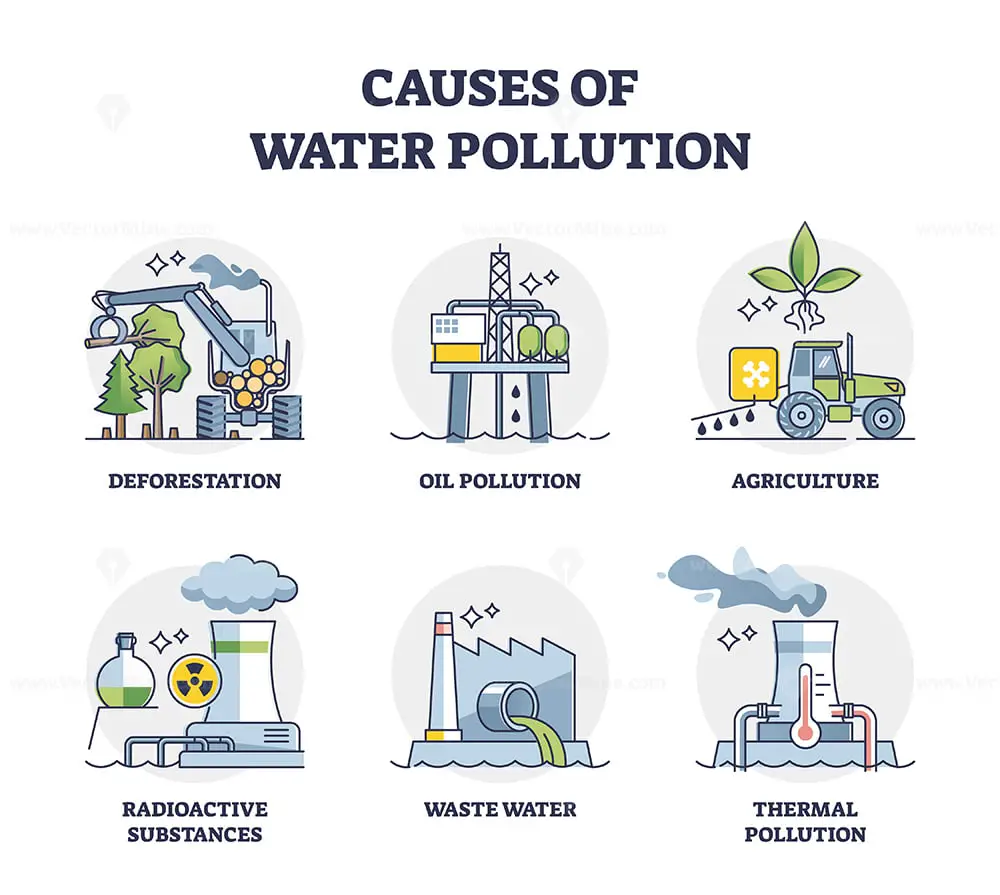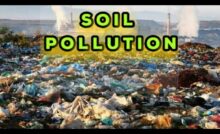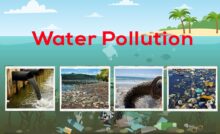Causes Of Water Pollution


Water pollution can be termed as the permanent contamination of water bodies by humans. Water pollution is founded on the discharge of harmful contaminants directly to water bodies with little or no processing to get rid of the toxic chemicals. The fact that pollutants get into water lies primarily in the fact that pollutants fundamentally use water through the cause or intention of humans. Water pollution is one of the critical issues that India has been facing of late. It may also be noted, untreated sewage itself generates the maximum amount of such pollution in India. Agricultural runoff and small industries units provide additional avenues for uncontrolled pollution. The conditions are pathetic to the point that there is a very high probability that there cannot be a single water body of India whose ecosystem has been kept intact and undamaged to some extent or the other. It is also said that about 80% of Indian water bodies are highly polluted. Ganga and Yamuna are the most polluted rivers of India.
1. Farming and Nutrient Pollution: Farming is the biggest source of water pollution in the world. When it rains, farming and animal husbandry cause fertilizers, pesticides, and animal manure to run into our water sources, bringing with them nutrients and pests such as bacteria and viruses. Nutrient pollution, which is formed by an excess of nitrogen and phosphorus in water or air, is the world’s biggest threat to water quality and has the potential to cause a deadly blue-green algae bloom toxic to animals and people. Sewage and fertilizers and some wastewater are rich in nutrients. If they fall into water bodies they will help algae and weeds grow in water bodies, it will make the water unpleasant to drink, and even clog up filters. Too much algae will also end up causing oxygen starvation.
2. Sewage and Wastewater: Wastewater is used. It is ours from our toilets, showers, and sinks (sewage) and that of industry, commerce, and agriculture (think solvents, metals, and toxic sludge). Storm water runoff, when rain washes road salt, oil, grease, chemicals, and trash off hard surfaces and dumps them into our streams, rivers, and lakes, is also part of it.
3. Surface Water Pollution: Surface water is the water on the surface of the earth such as rivers, lakes, lagoons, and oceans. Hazardous substances coming into contact with this surface water, physically mixing with the dissolved substances can be termed as surface water pollution. A typical example would be oil spills in industries and industries releasing chemical waste into water bodies are also massive culprits.
4. Oxygen Depletion: Microbes survive in water bodies. They are aerobic microbes and anaerobic microbes as well, if extra biodegradable material (bad material) is added to the water, it welcomes more microbial growth, and they use more oxygen from the water. When oxygen is used up, the aerobic microbes are killed and the anaerobic microbes multiply to release toxins like ammonia, sulfides, etc.
5. Pollution of Groundwater: When the soil is sprayed with chemicals and pesticides, rain washes them deep into the earth. These seep into the groundwater underground and contaminate it there. This means that every time we dig wells and bore holes and try to get water from underground, it has to be treated first.
6. Oil Industry Pollution of Oils: On a daily basis, dumping, runoff, and shipping of oils are done on the ocean surfaces. Oil spills cause serious issues, and are highly harmful to nearby marine animals such as fish, birds and sea otters and other marine animals. Since the oil cannot dissolve it remains on the surface of the water and chokes the fish. The oil gets stuck in the feathers of sea birds, preventing them from flying. Some of them succumb to this process.
Read Also:
- Introduction To Water Pollution
- Introduction To Air Quality And Pollution Control
- Introduction And History Of Anthropogenic Pollution
- Air Pollution And Your Health
- What Is Air Pollution
- Air Pollution In India
- Prevention Of Plastic Pollution
- Health Effects Of Plastic Pollution
- Environmental Effects Of Plastic Pollution
- Causes Of Plastic Pollution
Recent Posts
Always Keep These Things In Mind While Investing
The recent global economic slowdown and the resulting setbacks have taught multinational companies and wealthy…
What Are The Basic Principles Of Investment
Whether a man or a woman invests in the share market, they are investors. Everyone…
How Is Technical Analysis Done In Stocks
To understand technical analysis, first of all we need to understand the chart. There are…
What Is Circuit And Value Averaging
Circuit is a system under which unbridled one-sided movement in any index or stock is…
Funda Of Buyback
The move of a company to buy back its shares is called buyback. By doing…
Definition Of Mobile Phones
A portable electronic telecommunications device that can perform various functions on the go, such as…

